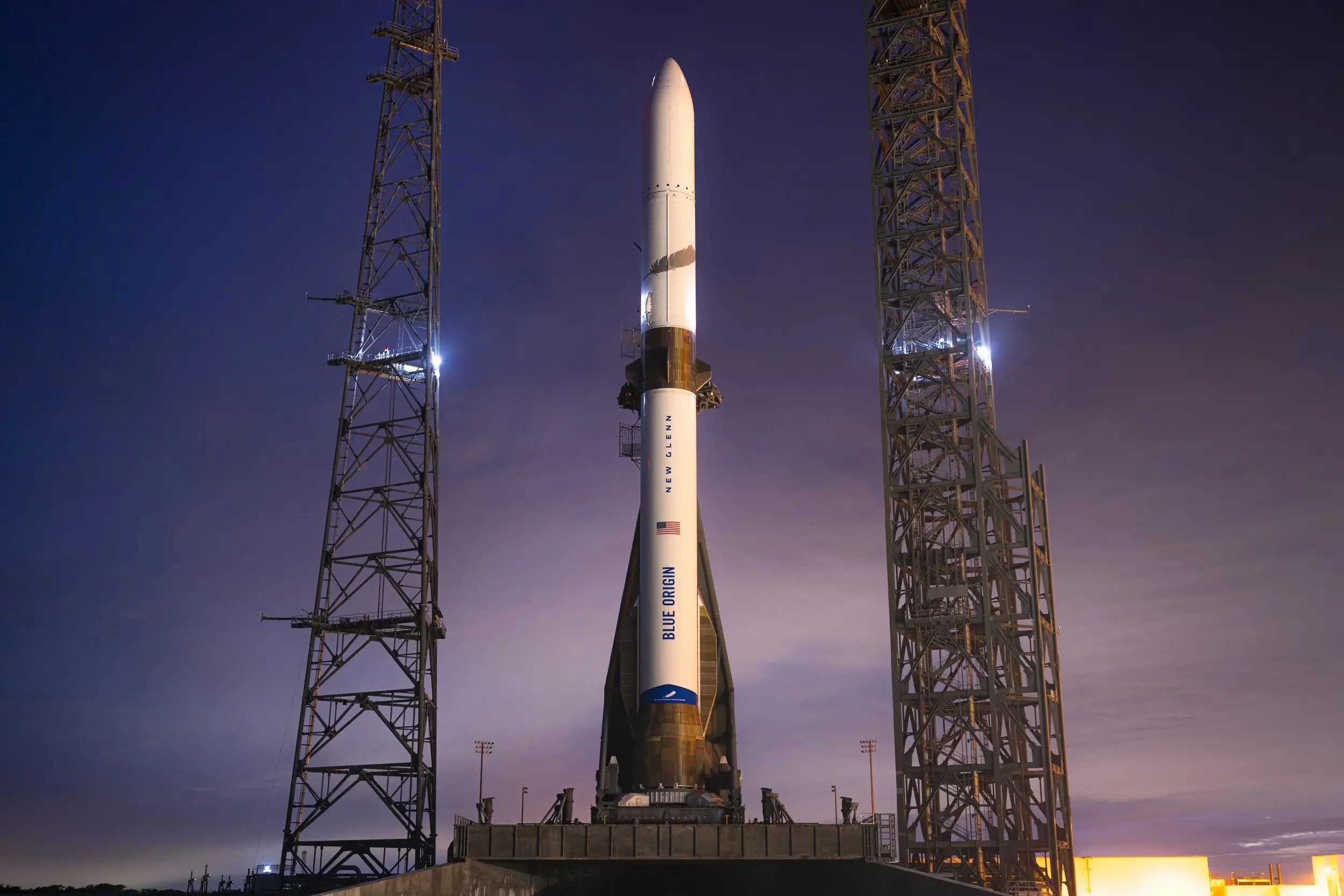Heavy-Lift Reset: What New Glenn’s Debut Means for Pricing, Backlogs, and GEO Logistics
New Glenn ready for to launch at Launch Complex 36.
Credit: Blue Origin
A new reusable heavy-lift entrant changes timelines—and negotiating power
Blue Origin’s New Glenn finally cleared the launch tower on 16 January 2025, lighting seven BE-4s and placing its payload in the intended orbit. Beyond the headline, the market impact is straightforward: for the first time in years, buyers can model heavy-lift manifests with two active US-based, reusable-first providers in the mix, rather than one. Capacity scarcity—historically the invisible tax embedded in GEO and deep-space logistics—starts to ease when a second large fairing and high-energy stage are actually flying.
The commercial read-through runs deeper than “more rockets = more supply.” With New Glenn moving from presentation decks to burn-in flights, prime contractors can restore dual-source strategies for time-sensitive missions, hedge schedule risk between families, and rethink mission design. A larger fairing changes what goes to GTO or direct-GEO in one shot; a high-energy second stage reduces the contortions required for niche orbits. For constellation owners, dual-manifest economics in high-energy orbits become practical again, pulling forward revenue realisation for satellites whose cash flows only start when they’re on station.
This is a platform moment: reusability compounds learning, cadence compounds yield, and the presence of multiple reusable heavy-lifters accelerates the industry’s S-curve. Startups thrive when launch is dependable infrastructure, not a bespoke event—exactly the shift you argue for when contrasting “one-off major projects” with reusable platforms that iterate quickly.
Procurement dynamics shift too. Insurers can price against empirical turnaround rather than paper reliabilities; satellite builders can standardise interfaces for two families and negotiate service-level expectations around integration timelines and fairing access. Even if early New Glenn cadence stays conservative in 2025, the revealed capability affects option value: buyers can place conditional slots, structure step-in rights, and diversify risk without rewriting mission architectures.
Go-to-market logic for satellite operators, then, isn’t about chasing an introductory price; it’s about portfolio resilience. A rational stance is to lock a minority of critical missions to the incumbent with proven cadence, allocate the next tranche to New Glenn where schedule elasticity exists, and reserve a tail for rideshare or transfer-vehicle alternatives. Payload teams can also lean into co-engineering with both providers to pre-qualify separation systems and deployment profiles—small investments that de-risk late-stage integration crunches. In other words, early commercial value comes less from headline cost per kilogram and more from restoring strategic choice across fleet, finance, and timeframe.
The knock-on effects show up in GEO logistics. A second reusable heavy-lift option compresses cycle times for replacement birds, lets operators run closer to end-of-life before committing to replenishment, and supports more ambitious electric-prop missions whose economics improve when initial orbit energy is higher. Expect ground segment vendors to lean into faster commissioning playbooks and for in-orbit servicing firms to position themselves as contingency partners during New Glenn’s ramp—both are rational complements when fleets rebalance between providers.
None of this requires perfect symmetry between heavy-lift families; it merely requires credible cadence. Once two reusable entrants are flying, the industry can plan around platforms rather than plead with programmes, which is precisely how disruptive innovators create room for new business models upstream and down.
